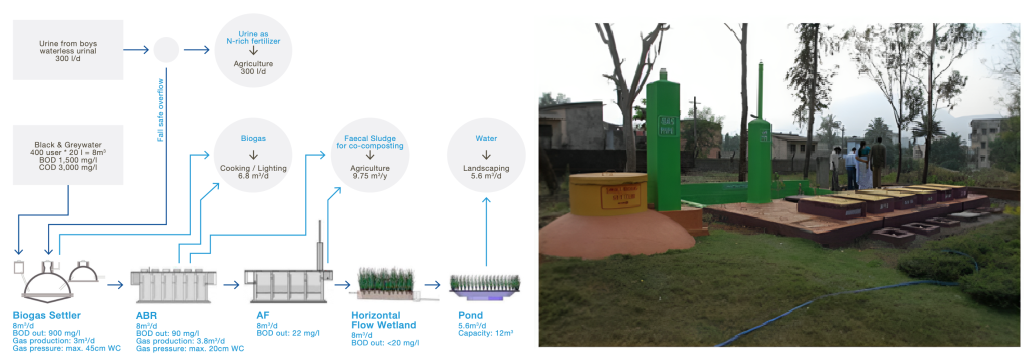2.4.1 Anaerobic baffled reactor with biogas capture

The Anaerobic Baffled Reactor (ABR) is a treatment system comprising multiple chambers and requires a settler as a pre-treatment option.
In each chamber, suspended and dissolved solids undergo anaerobic degradation. As the influent passes through, the sludge settles at the bottom of each chamber, and the microorganism breaks down the organic matter. It’s best to have four and not more than six chambers for optimal performance, allowing better interaction between microorganisms and wastewater. While ABRs are usually built without biogas capture, capturing the methane produced during the process is necessary for climate protection. ABRs are commonly used alongside other treatment steps and are well-suited for wastewater with a high concentration of suspended solids (TSS) and easily degradable organic compounds, indicated by a narrow COD/BOD ratio.
The table highlights the pros and cons of an anaerobic baffled reactor.
| Pros | Cons |
|---|---|
| This system is easy to use and has a relatively low operating cost | Expert design and skilled labour are required |
| Suitable for smaller and larger settlements | Well-organized O&M is required |
| Long service life | Low reduction of pathogens and nutrients |
| Capturing and utilizing biogas can lead to a reduction in greenhouse gas emissions | Susceptibility to temperature fluctuations |
| Capable of withstanding organic and hydraulic shock loads | Effluent and sludge require further treatment and/or appropriate discharge |
| High reduction of BOD | Treatment performance is temperature-dependent |
| Space saving if underground | Long start-up time |
| Low sludge production | |
| Renewable energy source if captured and utilized | |
| Adopted from: (Eawag) (SANIMAS, 2005) | |
For further information, please click on the Materials tab at the top of the page.
